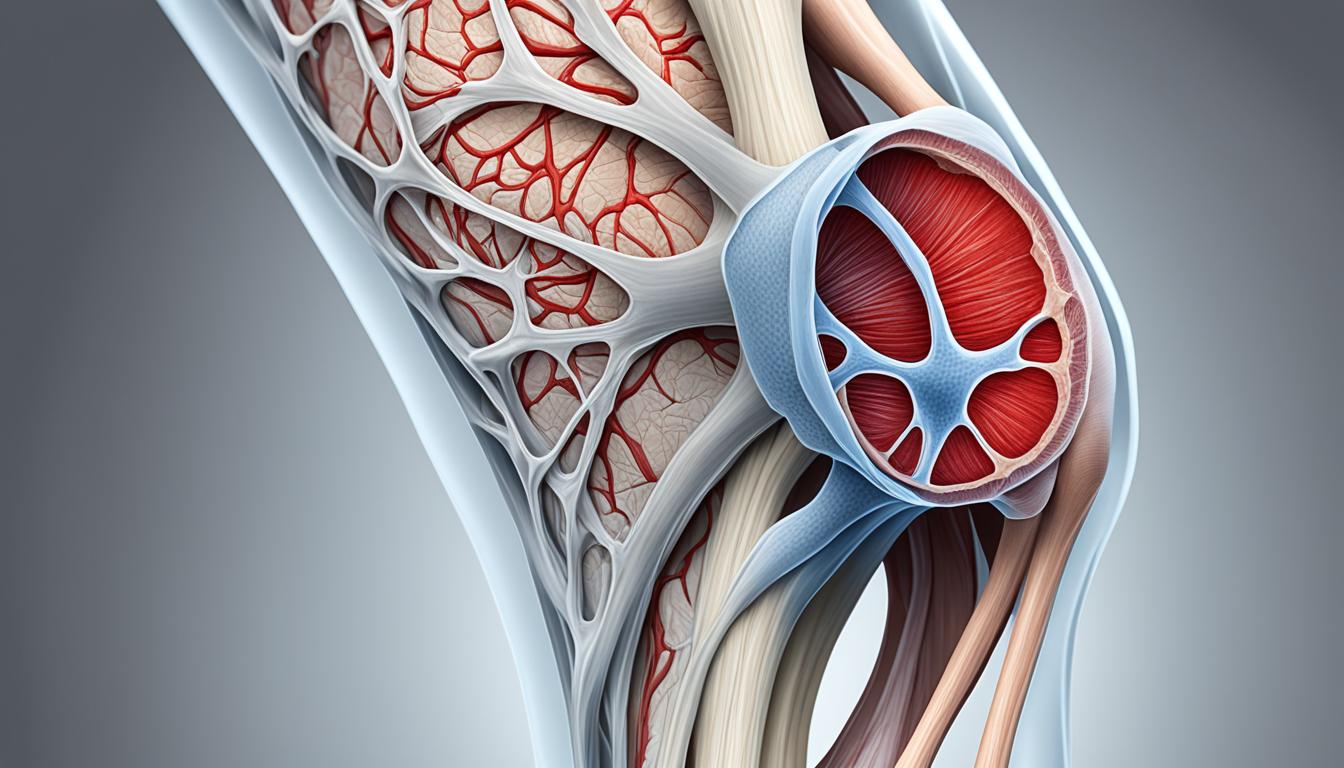A popliteal cyst, or Baker’s cyst, is a sac filled with fluid behind your knee. It causes the knee area to swell and feel tight. Often, it’s a sign of something else going wrong, like gout or a knee injury. You might feel pain in your knee and calf, notice swelling, and hear a click in your knee.
To find a popliteal cyst, a doctor will check your knee and might do tests like an MRI. Initially, doctors try non-surgery options. These include pain-reducing medicine, shots of steroids, or exercises to make your knee’s muscles stronger. If these don’t work, they might have to do surgery to fix the cyst or any knee damage.
New treatments like injecting fat cells, your own bone marrow or platelets into your knee are available. They use your body’s healing power to fight the cyst. These options look good for helping with pain and making your joint work better.
Key Takeaways:
- A popliteal cyst, also known as a Baker’s cyst, forms behind the knee and can cause swelling and discomfort.
- Common symptoms include knee and calf pain, fluid buildup around the knee, and a clicking feeling in the knee.
- To diagnose a popliteal cyst, a doctor may perform a knee examination and order imaging tests.
- Non-surgical treatment options include medications, steroid injections, and physical therapy exercises.
- Innovative regenerative treatments such as micro-fragmented fat injections, BMAC injections, and PRP therapy are potential alternatives to surgery.
Causes of Popliteal Cysts
A popliteal cyst, or Baker’s cyst, happens when there’s too much synovial fluid. This can be due to many things like osteoarthritis, rheumatoid arthritis, and even gout.
When the knee makes too much synovial fluid, a cyst may form at the back. This can cause the knee to swell up and be painful. It may occur because the knee’s ‘lubricant’, synovial fluid, isn’t used up like it should be.
The wear and tear from osteoarthritis can also cause too much synovial fluid. As joint cartilage breaks down, the body tries to protect the joint by making more fluid. This can form a cyst behind the knee.
With rheumatoid arthritis, the body attacks its own joints. This leads to the knee making more fluid, causing a cyst. The extra fluid comes from the body trying to heal the joint.
If someone has gout, uric acid crystals can build up in the knee. This irritates the joint, causing more fluid to be made. This can eventually turn into a cyst.
To treat a popliteal cyst, it’s important to know what’s causing it. Addressing these root causes can help reduce or eliminate the cyst. This makes dealing with the pain and swelling easier.
Innovative Stem Cell Therapy for Popliteal Cysts
In recent years, there have been new ways to treat popliteal cysts. One method is micro-fragmented fat injections. In this, fat cells from the patient’s body are used. They help lower pain and swelling. This method is not very invasive and patients recover quickly.
Another way uses bone marrow aspirate concentrate (BMAC) injections. It uses special stem cells from the patient’s bone marrow. These cells can fix damaged tissues. The procedure is quick and uses x-ray to guide the injections.
Platelet-rich plasma (PRP) therapy is a third option. It heals using platelets from the patient’s blood. PRP injections can repair injured parts of the body. They also help with pain and improve movement.
All these new therapies give hope to people with popliteal cysts. They avoid the need for big surgeries. Patients find these methods effective and easier to deal with than older treatments.

